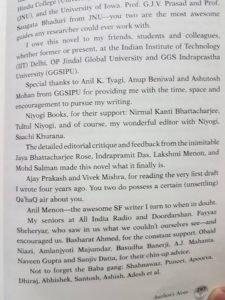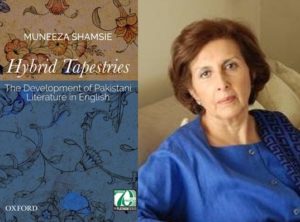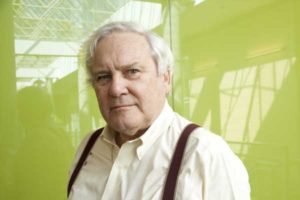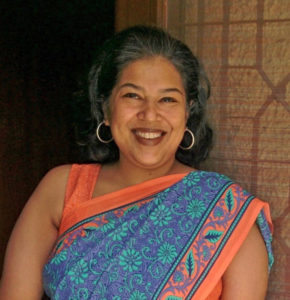The 2017 Bailey’s Women’s Prize for Fiction: a Formidable Shortlist and Winner
(I wrote about the Bailey’s Women Prize for Fiction on 7 June 2017, the day the winner, Naomi Alderman, was announced. It was published in Bookwitty. )
 Research has long shown that major literary prizes have not acknowledged women writers. The Bailey’s Women’s Prize for Fiction was established in 1996—first as the Orange Prize for Fiction, and after this year’s prize it will be renamed the Women’s Prize for Fiction—by co-founder and writer Kate Mosse to “celebrate women’s creative achievements and international writing, whilst also stimulating debate about gender and writing, gender and reading, and how the publishing and reviewing business works.”
Research has long shown that major literary prizes have not acknowledged women writers. The Bailey’s Women’s Prize for Fiction was established in 1996—first as the Orange Prize for Fiction, and after this year’s prize it will be renamed the Women’s Prize for Fiction—by co-founder and writer Kate Mosse to “celebrate women’s creative achievements and international writing, whilst also stimulating debate about gender and writing, gender and reading, and how the publishing and reviewing business works.”
The inspiration came the year of the Booker Prize in 1991 when none of the six shortlisted books was by a woman, despite the fact that almost 60% of the novels published that year were by female authors. A group of women and men working in the book industry got together to discuss the issue and the idea for the prize was born. From 2018 onwards there will be a family of sponsors instead of a title sponsor, the award will continue to be £30,000.
Now in its second decade, the prestigious literary prize is recognized worldwide for its exclusive spotlight on women writers. The winners have dealt with a range of subjects in the past but more than its uniqueness it has been the experiment with form, language and style while creating something new and memorable which has stood out as the winning mark. This year too, the shortlist of six novels was extraordinarily fine: there’s the winner, Naomi Alderman’s The Power, Linda Grant’s The Dark Circle, Gwendoline Riley’s First Love, Madeleine Thien’s Do Not Say We Have Nothing, Ayòbámi Adébáyò’s Stay With Me, and C.E. Morgan’s The Sport of Kings. Of the six novelists Linda Grant is a previous winner of this prize with her When I Lived in Modern Times (2000) and was previously longlisted for the Prize in 2008 for The Clothes On Their Backs. C. E. Morgan’s Sport of Kings was nominated for the 2017 Pulitzer Prize for Fiction and she won the 2016 Windham-Campbell Prize, Madeleine Thien won the 2016 Scotiabank Giller Prize for Do Not Say We Have Nothing and was shortlisted for the 2016 Man Booker Prize. Ayòbámi Adébáyò is making her debut as a writer. The common thread linking all of these women is not only their sharply confident voices but also their ability to observe and convey gender dynamics within society and across history.
Despite years of women’s movements being active in various countries and now with the second wave of feminism, women continue to negotiate for their space and are unable to experience the same sense of entitlement that men have within society. This is well illustrated in Ayòbámi Adébáyò’s Stay With Me when the husband, Akin, and wife, Yejide, argue about choices open to them as individuals. Yejide has been relegated to first wife status with the arrival of Funmi –a decision foisted upon them by their families—as Yejide has been childless. Yejide is furious with Akin:
‘So now you can talk? You can blurt it all out? Who married another woman? In this house who married another woman, tell me? Tell me now! Which bloody cheat did that?’
He traced the brown coffee stain with his thumb. ‘We’ve talked about that, we’ve settled it.’
I was so angry I could hardly breathe. I stood up and leaned across the table to stick my face in front of his. ‘OK now. Something else is settled. I want a baby and since you are too busy at your new wife’s place to try and get me pregnant, I can get a baby from any man I want.’
He got up and grabbed my arms just above the elbows. The veins in his forehead popped. ‘You can’t, ‘he said.
I laughed. ‘I can do anything I want.’
His nails bit into my arms through my shirtsleeves. ‘Yejide you can’t.’
I wagged my head. ‘But I can. I can. I can.’
He shook me until my head bobbed and my teeth rattled. Then he let go suddenly. I crashed into a chair, grasping the table for balance.
It all boils down to a matter of perspective, brought out searingly in Gwendoline Riley’s slim novel First Love. Young writer Neve is reading from a “strange document” to her husband, an older man, Edwyn, the brutal domestic violence her mother experienced in her first marriage.
“Listen to this,’ I said. ‘Slapped, strangled, thumbs twisted. Hit about head while breast-feeding. Hit about head while suffering migraine. Several kicks at base of spine. Hot pan thrown, children screaming.’
‘Oh, she kept a list, did she?’ Edwyn said.
‘Not at the time. She had to write it down for her solicitor. Not that anyone listened.’
‘I see. And how long were they married?’
‘Eight years.’
‘And she could remember that far back, could she? Did she keep a diary?’
‘Did she keep a diary? What a weird, horrible question.’
He frowned slightly, but he was smiling too, his eyes were glittering.
‘It was a genuine question,’ he said. And as he went one, he spoke slowly, softly, as if I were very stupid. Stupid and volatile.
‘She must have a very good memory, that’s all. Some people do. Of course they do. ‘That’s all I wanted to know. I’m interested. It’s very interesting to me. That she’d remember, quite so clearly, all of these …what might you call them?’
‘Assaults,’ I said.
He tilted his head, musing on whether to allow that.
‘Well – incidents,’ he said.”
It is not surprising then, given the overwhelming patriarchal blindness that continues to exist in societies that Naomi Alderman’s The Power, winner of the 2017 prize, is a tantalizingly refreshing vision of a society where women are in authority—an idea notably explored by many women writers including, of course, Alderman’s mentor and co-longlisted writer, Margaret Atwood. In The Power women intimidate others, particularly men, by shocking them with an electric charge their bodies create naturally. Unfortunately, besides its strong and feisty women, there is little creative imagination at play as the characters have merely been supplanted in a social structure, which is similar to patriarchal norms.
The novels by Madeline Thien and C.E. Morgan are very different for their historical sweep about politics and literature told through inter-generational family sagas. Do Not Say We Have Nothing is about a Chinese family that lives through the Cultural Revolution and then emigrates to Canada. It is a novel in which a “Book of Records” and the playing of Western Classical Music in a communist regime are interspersed with detailed historical research. Similarly Sport of Kings is ostensibly about breeding thoroughbreds and horse racing while it raises crucial discussions about slavery, racism, Darwinism, histories of the marginalized, and modern American civilization. Despite a little sidetracking into rambling backstories, C.E.Morgan’s exquisite craftsmanship is on display.
Picking a winner from the formidable shortlist of talent must have been tough for the judges chaired by Tessa Ross, Sara Pascoe, Aminatta Forna, Katie Derham, and Sam Baker!
11 June 2017







